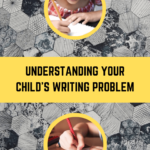The Latest Digital Trends Which Education Is Embracing
The Education system and learning environment consistently has to become creative with the way that the learning environment is presented to students and to consistently update teaching methods to appeal to today’s students. With today’s obsession with the digital world and access to social media and wealth of information so readily available, retaining concentration from students in a classroom environment is much more of a challenge than it used to be.
To combat this issue, education is learning to embrace (and at least consider) some of the latest digital trends within the education program to improve engagement and make learning more of an interactive experience. Some of the latest digital trends which have particularly caught the attention of the education industry includes; Virtual Reality Learning, Redesigned Learning Environments, Game-based Learning and Artificial Intelligence. This post outlines how exactly education is embracing some of the latest digital trends.
1. Augmented Reality/Virtual Reality
Virtual Reality Learning is something which many education institutions are starting to implement or at least start to consider implementing in the next few years. The Virtual Learning Environment is a combination of Virtual Reality (VR) and Augmented Reality (AR) and primarily focuses on cognitive development for students in education.
VR technology was the face of 2015, and then VR got upgraded to AR in 2017 and now many schools, colleges and universities are using this technology to improve their teaching methods and to adapt to the way in which students learn these days. Virtual Reality Learning helps to bridge the real and digital world, encourages students to actually become part of the information, as well as letting the students literally see what they are learning. Compared to the traditional classroom, the virtual classroom enables students to be transported to a simulated environment.
2. Redesigned Learning Environments
Similar to the modern working environment, the modern learning environment in schools and colleges utilises collaborative-friendly spaces, feels much more open and informal, and is progressive in terms of equipment and technology. Unlike the old style classrooms where rows of desks are all pointing towards the front of the room, today’s learning environments are much more interactive and trendy.
Designed to incorporate the latest technology, modern learning environments support SMARTboards instead of chalkboards, SMARTdesks instead of individual seats, virtual learning equipment, and creating more informal learning spaces.
3. Gaming Theory
It can sound a bit cliché and there will most likely be a whole bunch of people out there that believe game-based learning could have a negative impact on education rather than positive, however with today’s latest technological advancements and the average human attention span slowly decreasing, game-based learning has more pros than cons and seems to be a great way to go about interactive learning. Before making your own mind up though, let’s take a look at a few facts about gaming theory within education and how in fact it could benefit learning practices.
Game-based learning can enhance motivation, engagement and knowledge retention, and really encourage students to actually enjoy going to school and learning new things in the classroom. The gaming theory is that – at the base of every engaging game there’s an enticing story line which pulls the player in and appeals to their motivations and emotions. The gaming theory has found that this focus on storytelling and engagement could be applied within the learning program to enhance learner engagement and recall.
4. Artificial Intelligence
Many education institutions are incorporating the blended learning environment, an approach which combines face to face interactions within the classroom with online activities. The blended learning environment helps to encourage students to be active and to take part in the classroom rather than just sitting and listening to a lecture. Artificial Intelligence (AI) is one of the latest digital trends which is working its way into the education system and is already proving useful in higher education.
Artificial Intelligence can be used in education in a number of different ways, and rather than replacing teachers, it can be used to complement them. Some uses of AI might include; creating virtual student advisers for additional support, automating basic activities such as grading, providing students and educators helpful feedback, as well as having the power to change how schools find, teach, and support their students.
To Conclude
With today’s booming digital world and all the latest advancements in technology, education is learning to embrace some of these latest technologies in order to adapt to the needs of their students and to improve the modern learning environment and teaching methods. Classroom study and education practices can be eased through technological innovation – and now there are many digital trends which education is embracing. This article has only touched on a few of the main digital trends, however there’s many more. Let us know if you come across any others which you think education is embracing!





Comments loading...